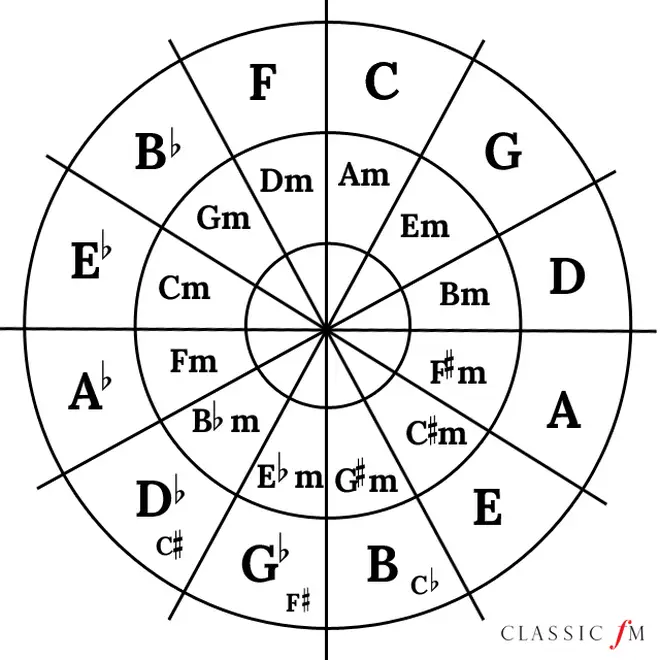On Air Now
Early Breakfast with Lucy Coward 4am - 6:30am
28 February 2019, 17:03 | Updated: 28 February 2019, 17:06

Almost every song in the pop charts is built around the same four chords. And it's nothing new – they're the same three chords that Pachelbel used in his famous Canon. But why do we keep coming back to this exact structure?
We’ve all heard them – those people who complain that ‘all modern music sounds the same’... Well, in one way they’re absolutely right.
Quiz: what percentage music geek are you?
The mind-boggling reality is that a huge proportion of the world’s hit songs are built upon the same four chords. Don’t believe me? Just listen to this medley by comedy rock band, ‘Axis Of Awesome’:

Axis of Awesome - 4 Four Chord Song (with song titles)
And it’s not just modern music. The ‘four chord song’ has been around since Pachelbel’s Canon around the turn of the 18th century. These four chords are the magic I, IV, V and vi. But why are these four chords so universal? Coincidence ... or science?
What’s with the Numerals?
We use Roman Numerals to name chords so we can identify which note of the scale they’re built upon. Chord I is built upon the first note of an eight note scale, and chord V upon the fifth.
Why are these chords so special?
At it’s most basic level, music is based on maths. Each pitch vibrates at a certain frequency, and the ratios between these frequencies make the interval sound consonant or dissonant. The most consonant interval (if you can call it an interval) is the unison, which has a ratio of (1:1). After that it’s the octave, (2:1) an interval which sounds so consonant to the human ear that we even give both notes the same name.
The reasons that the progression of I, IV, V is so pleasing to the human ear is that those chords are built upon the three most consonant intervals with the tonic:
I (1:1)
V (3:2)
IV (4:3)
In fact, another reason this is such a stable trio is that chords IV and V are actually both a fifth away from the tonic – in opposite directions!

So where does chord vi come into it?
Well, if you look back at the circle of fifths above, you’ll see that every major chord has a minor reflection, (shown in the inner circle) which contains all the same notes as its major counterpart. Chord vi is the minor reflection, or ‘relative minor’ of Chord I, and this similarity means that it still feels comfortably related to both Chord IV and Chord V.
Find out more about the Circle of Fifths >
There’s no doubt that the human ear is hooked on this repetitive chord progression, and it turns out there’s a scientific reason why these particular chords interact so strongly with the tonic.
The concoction of different frequencies of the pitches within these magic chords create a whole load of ‘consonant’ frequency ratios, setting up the strongest memory of the tonic in the ear of the listener, and making them (rather poetically) long for a return to ‘home’ – to hear the tonic again.
Over the centuries writers have been able to exploit the magnetic appeal of these four chords in endlessly innovative ways to create hit after hit song.
But not everyone's a fan…

Pachelbel Rant